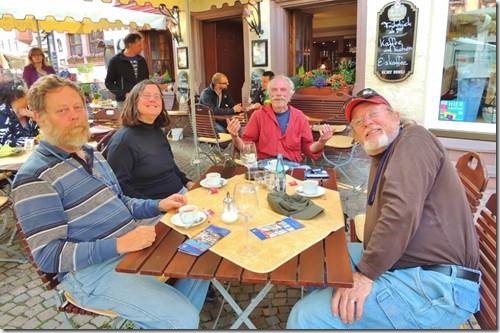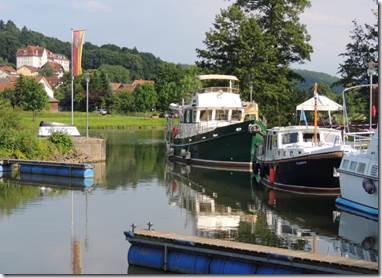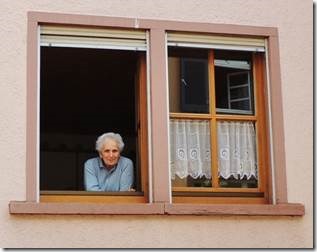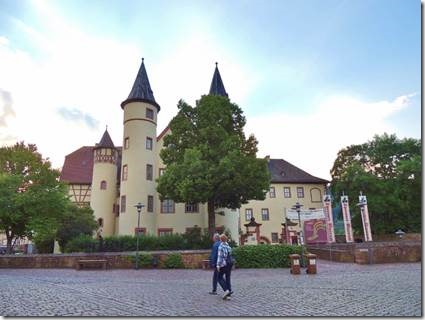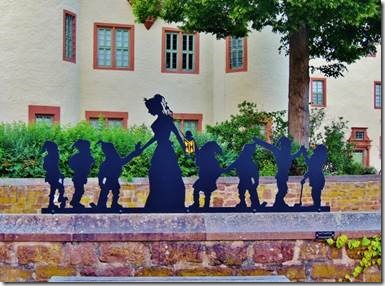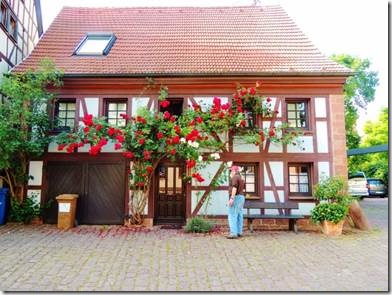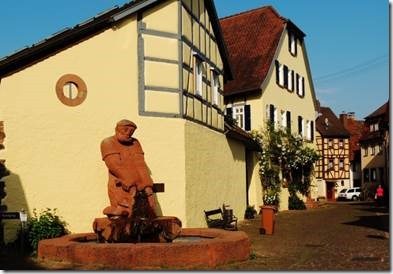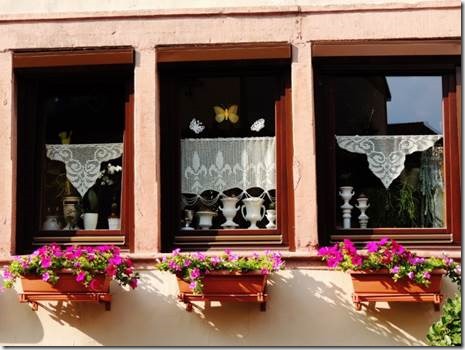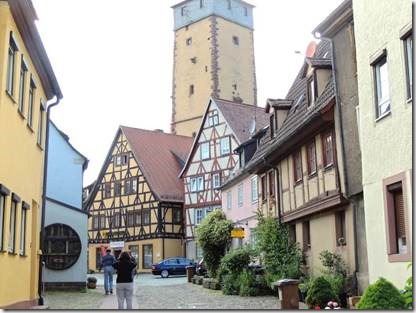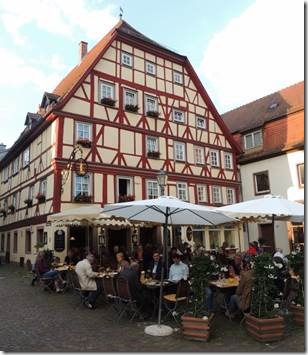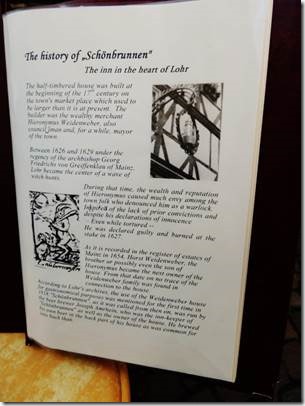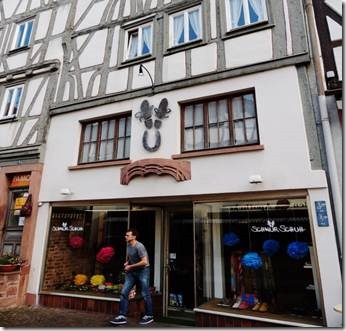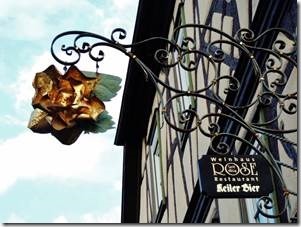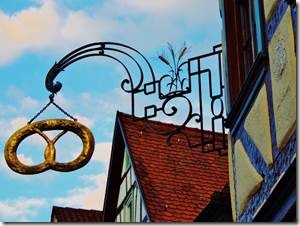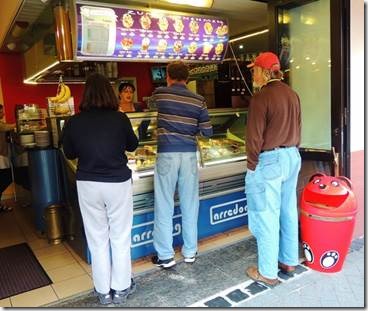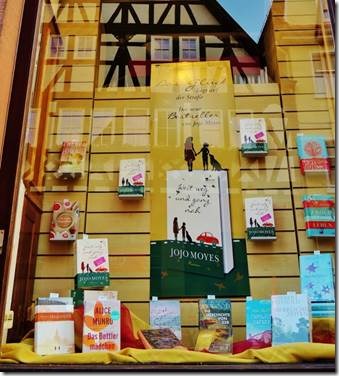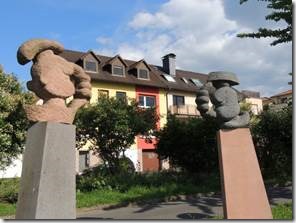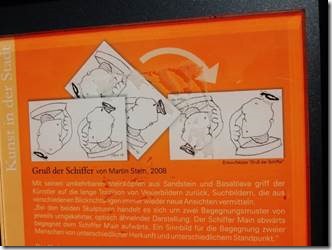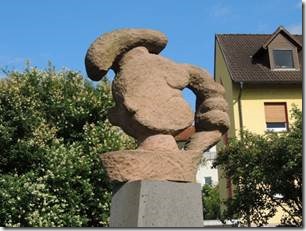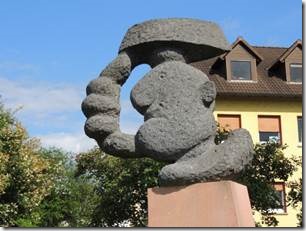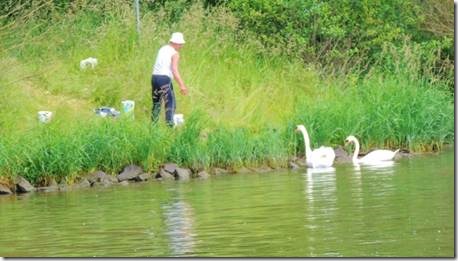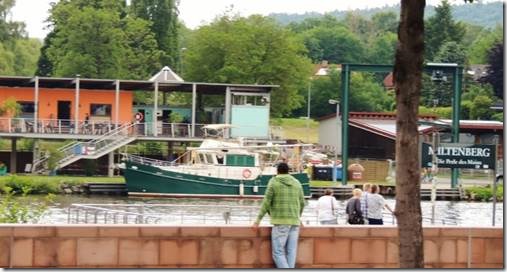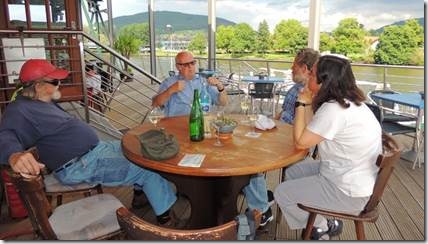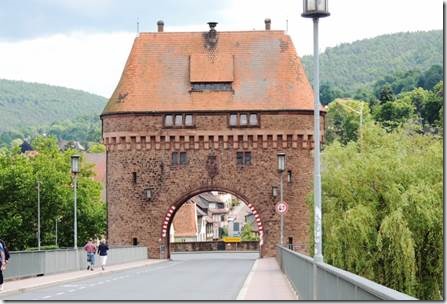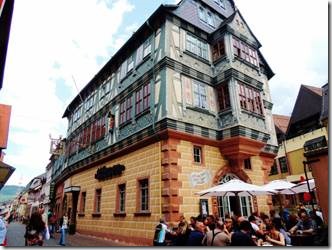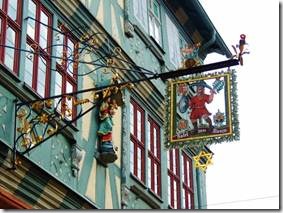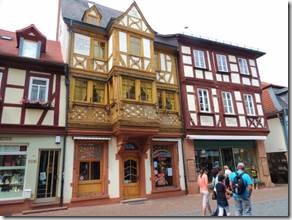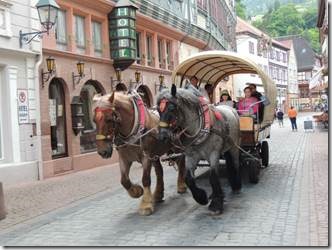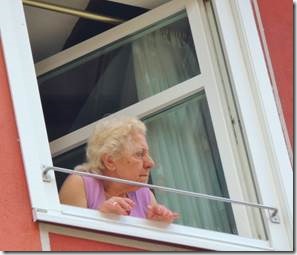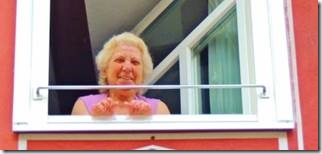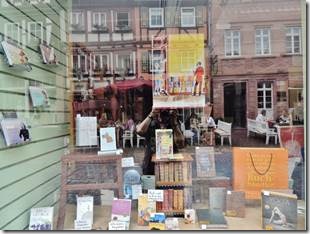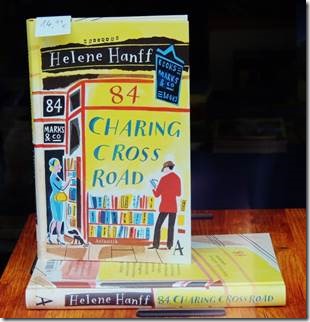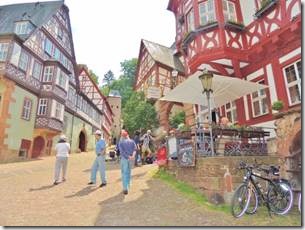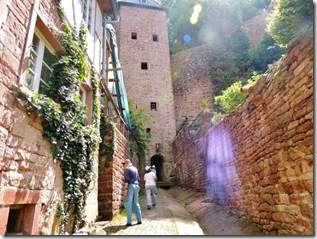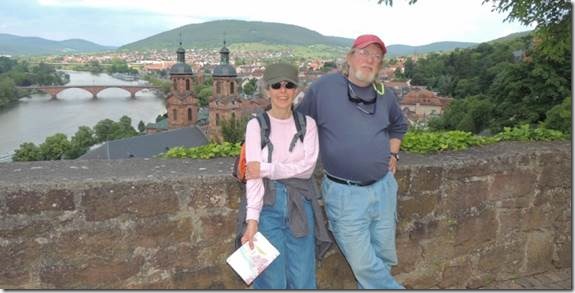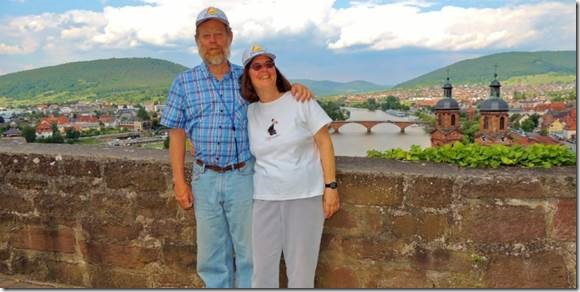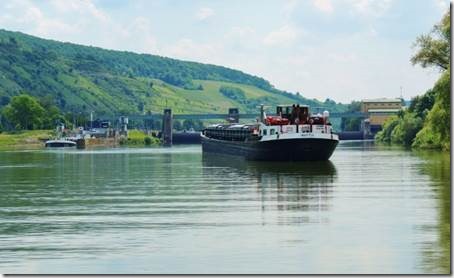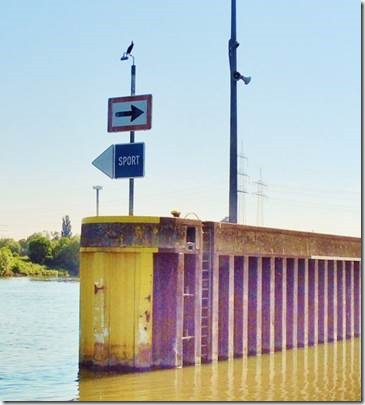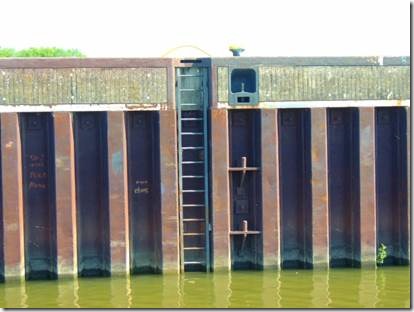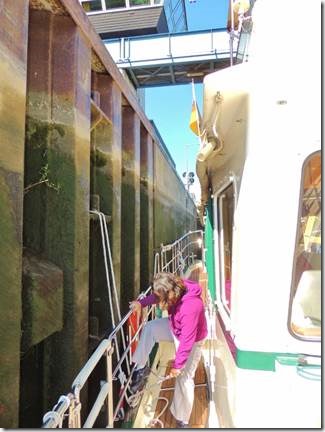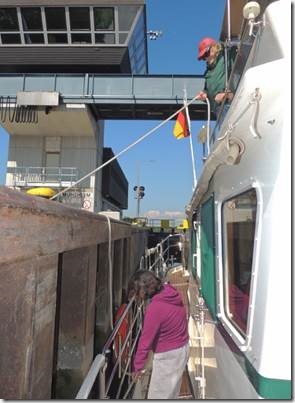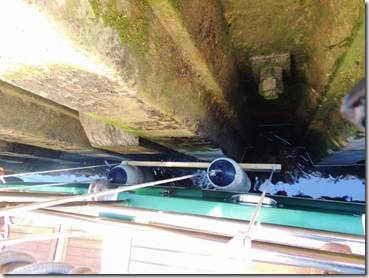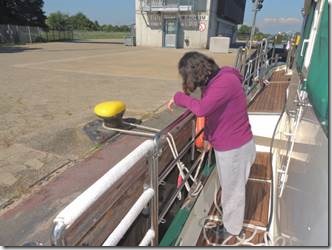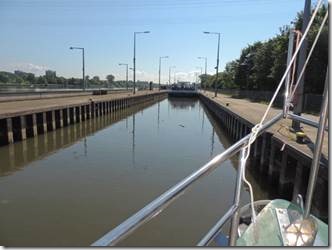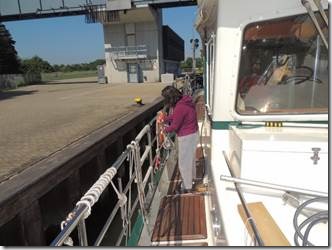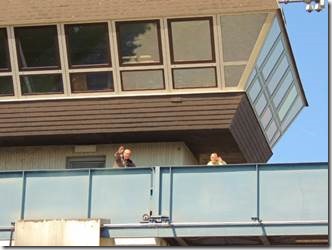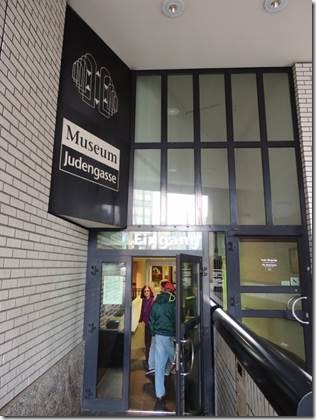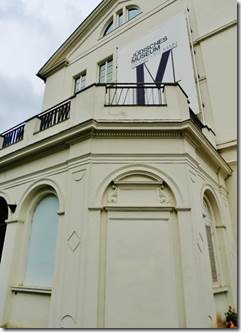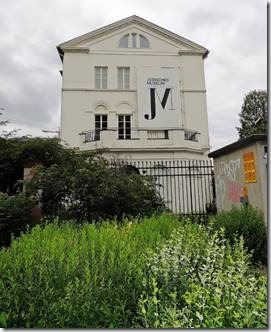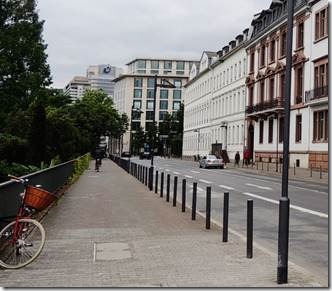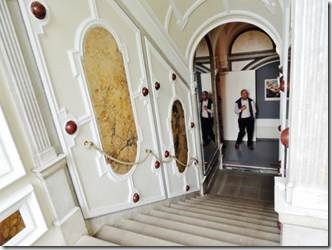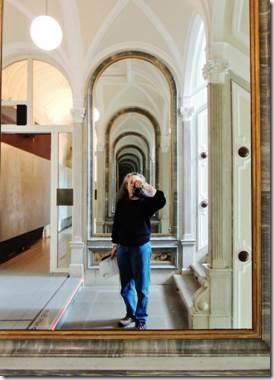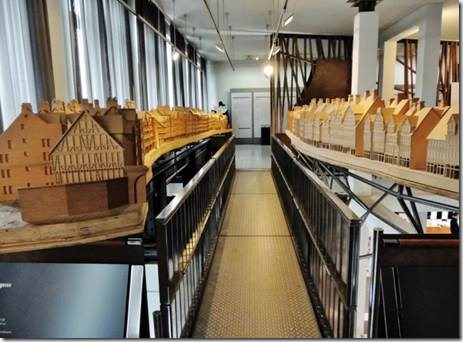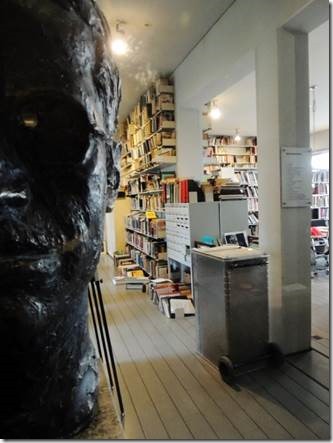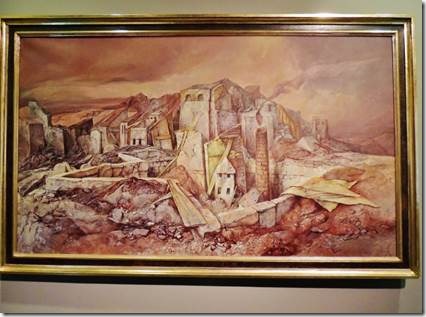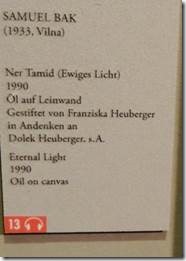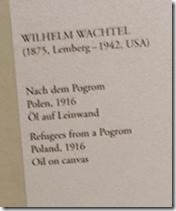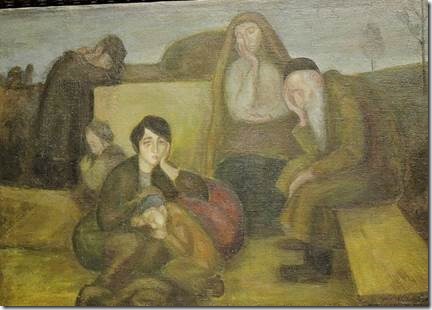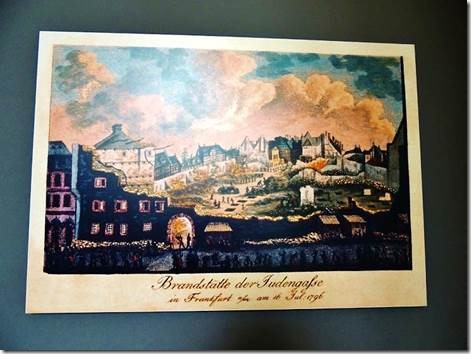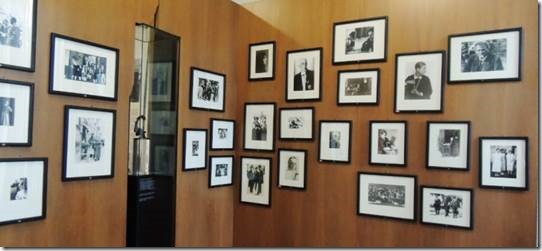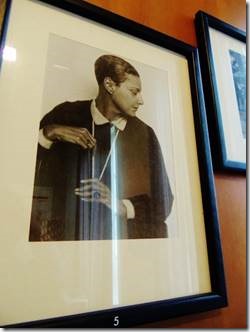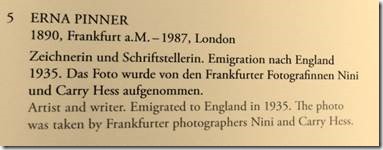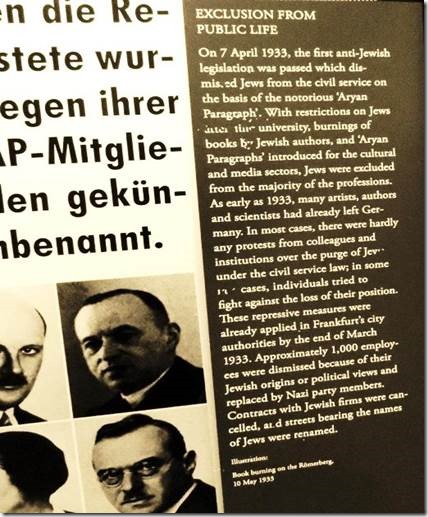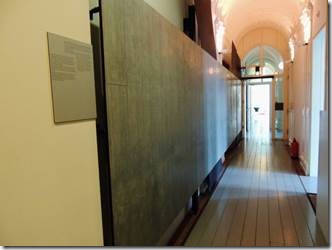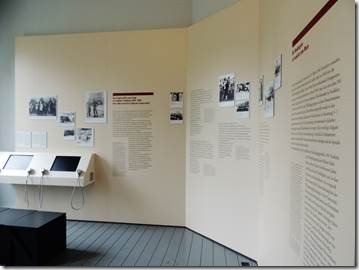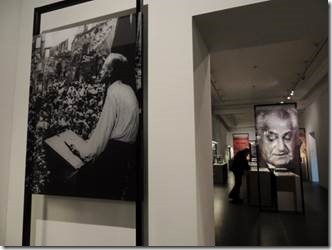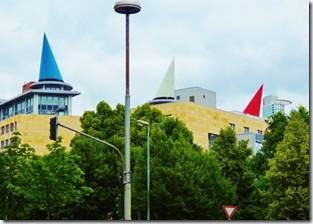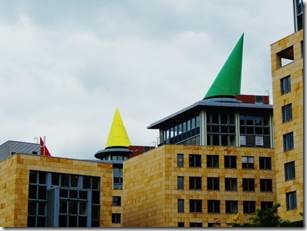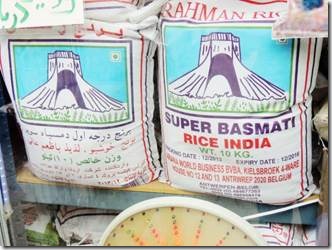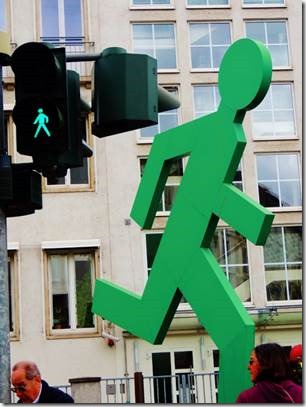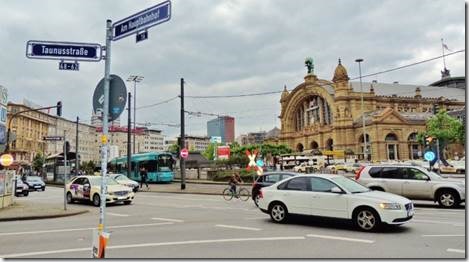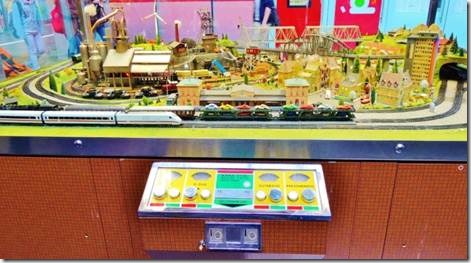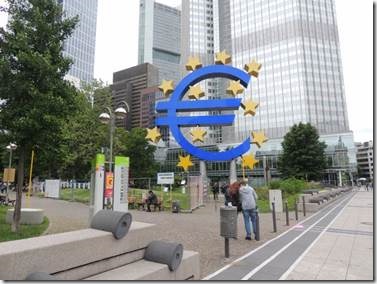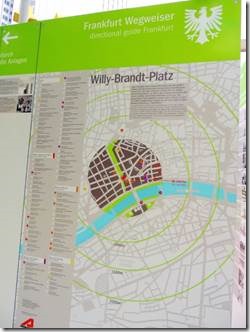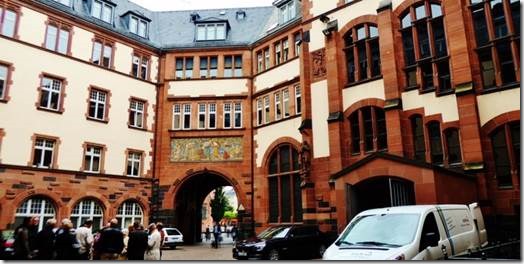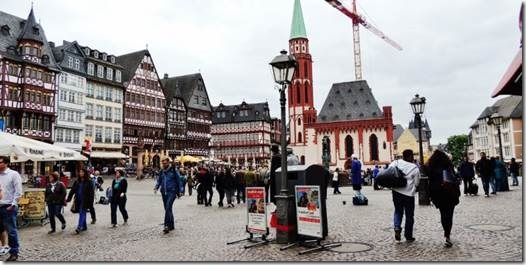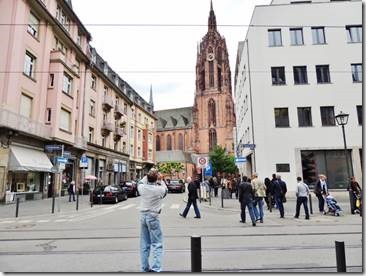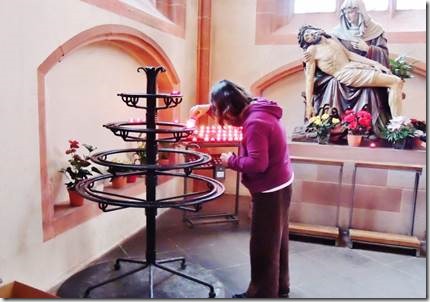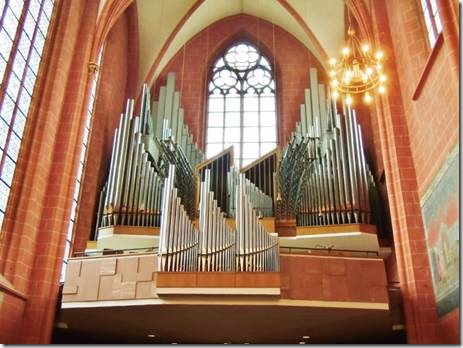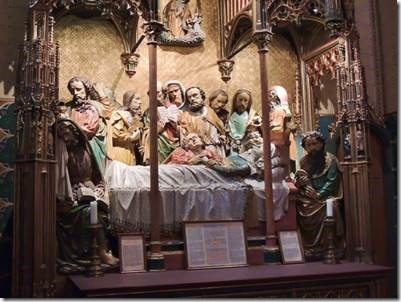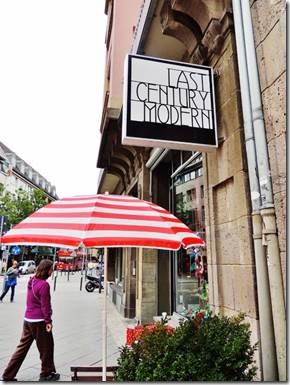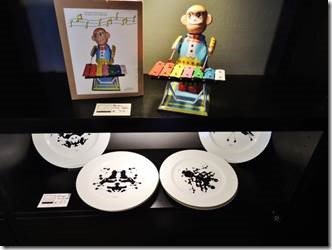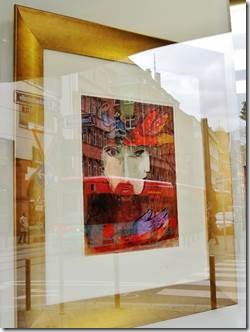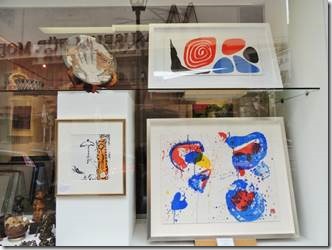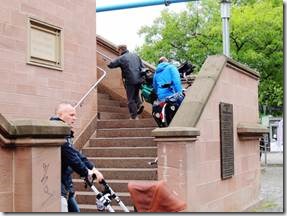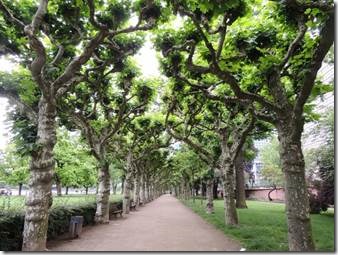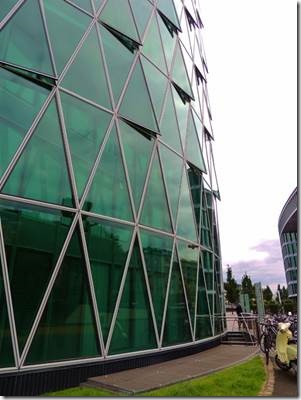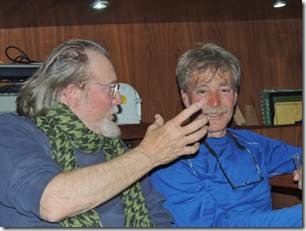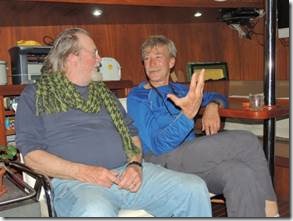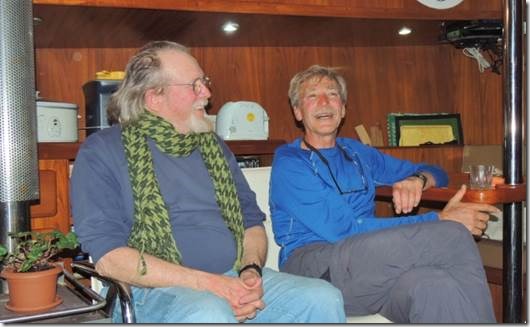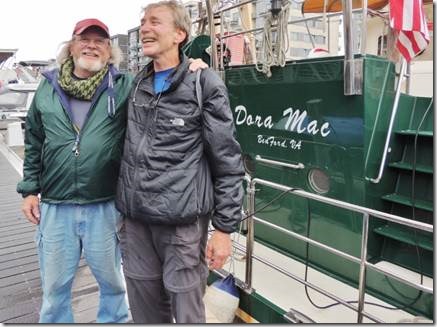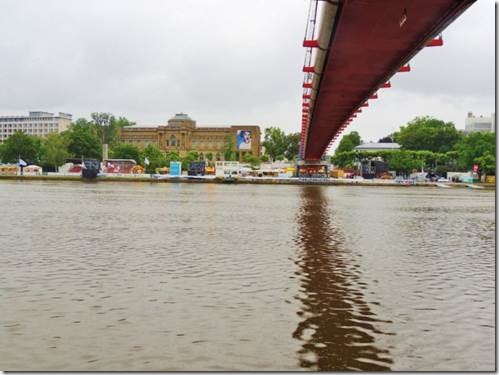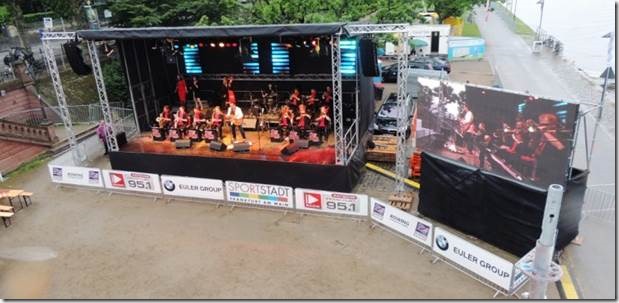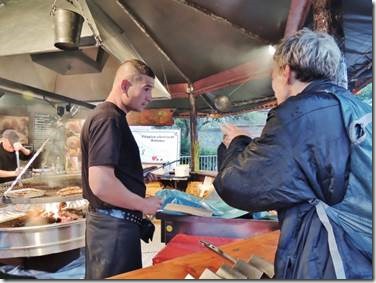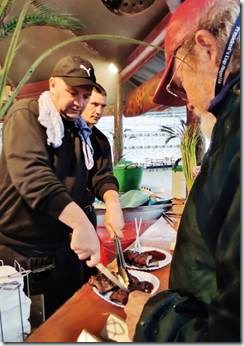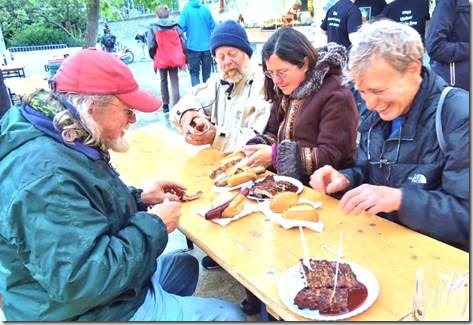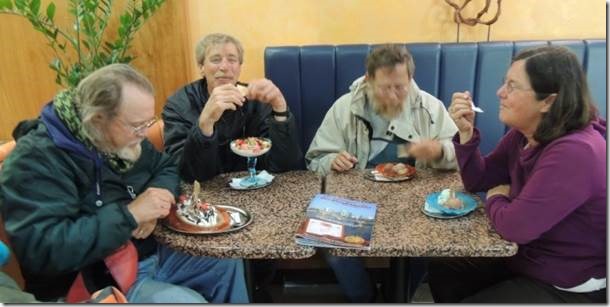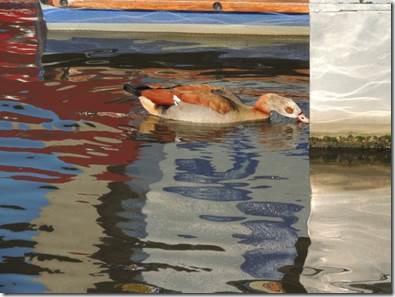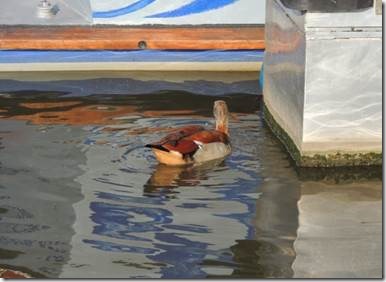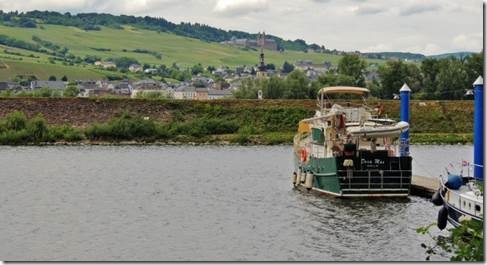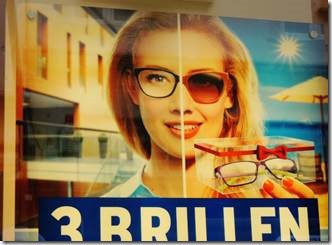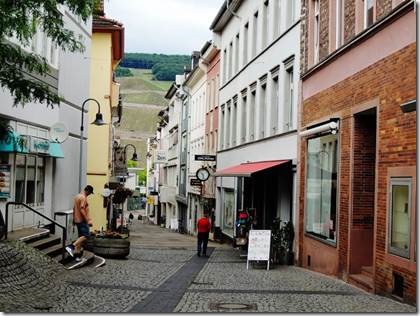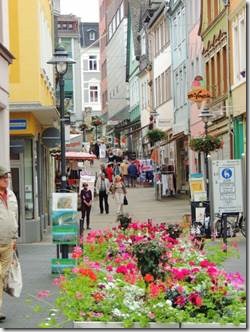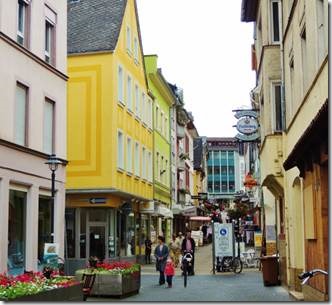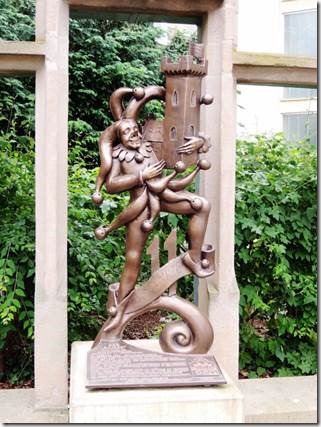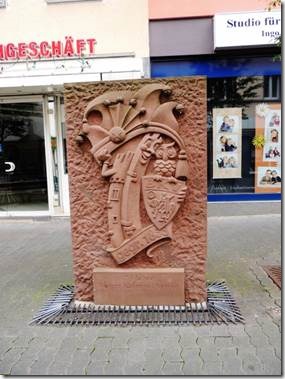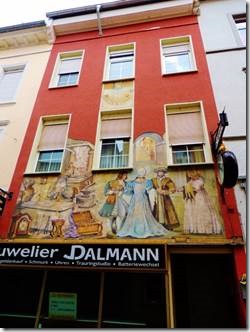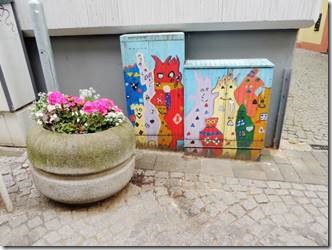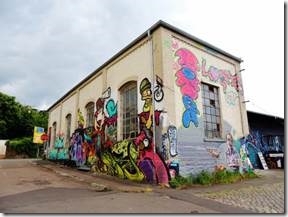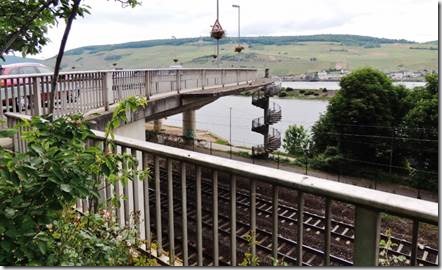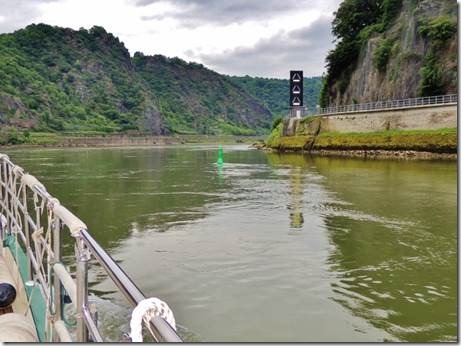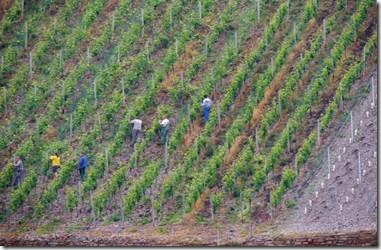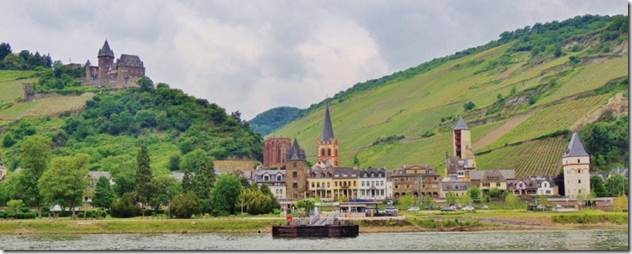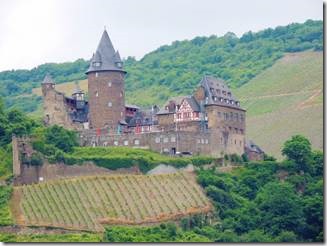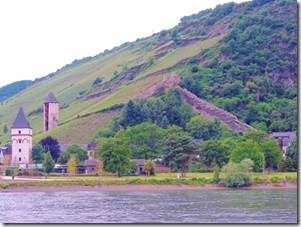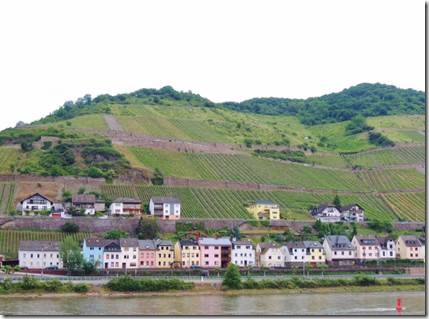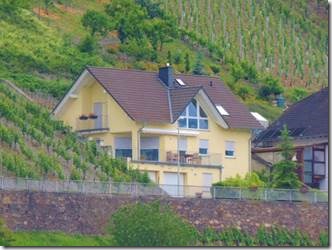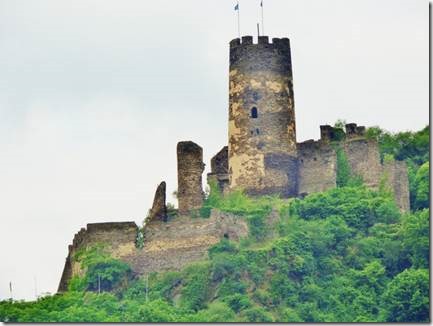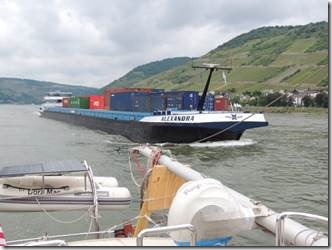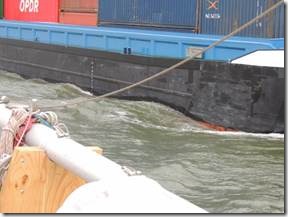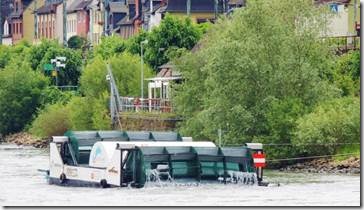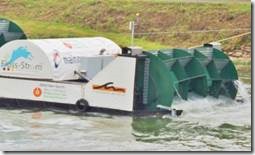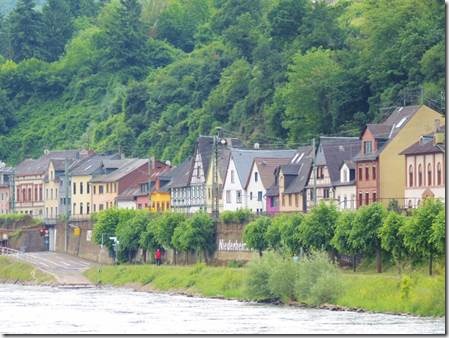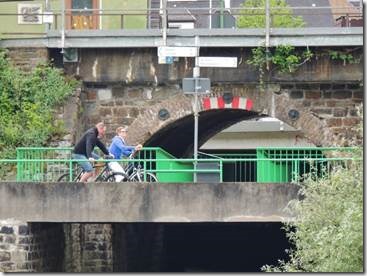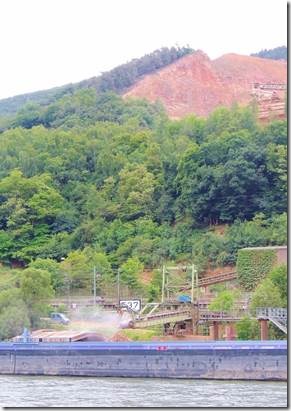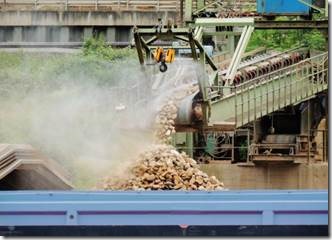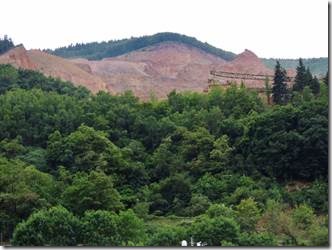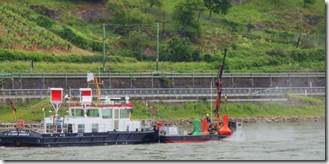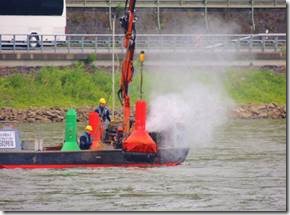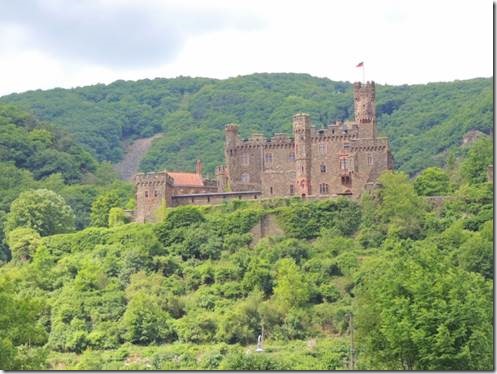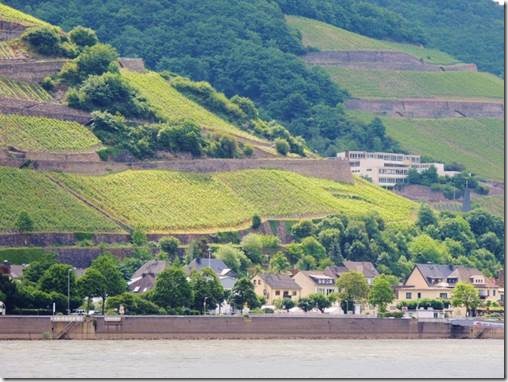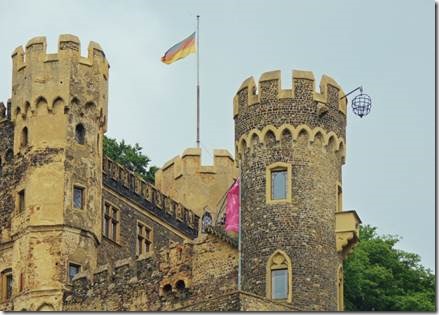Motor-und Segelboot Club Coburg
Bischberg am Main
Guten Tag,
Today Mary and I went cherry picking and there’s a cherry cobbler in the small oven even as I type.
It is 92 degrees on the thermometer inside the pilot house. Luckily it cools down after dark and we’re even still using our down comforter. Not sure for how much longer. But where to put it when we no longer need it? It’s huge which was wonderful during the winter in London, but not so good in the heat of summer. We’ll see.
We are just near Bamberg and will visit that city tomorrow. Today was food shopping day and every space on the boat is overflowing with multiple boxes of 3 kinds of cereal because we all eat different cereal. How funny is that when you think about it. We’re not exactly roughing it if have boutique cereal in the morning. Our pantry needs to be reorganized or we’ll never find anything other than those big boxes of cereal. I’ll share a photo when it’s done.
Ru
Lohr on the Main River
When we arrived at the Lohr Yacht Club everyone was very helpful getting us tied up to a berth (pretty much the only spot that would accommodate us as most yacht clubs along the rivers are really for boats smaller than ours.) It was 5:15 pm and we were sort of hungry so asked the harbor master for a restaurant recommendation. He suggested the near-by, very quaint old town. We were just finishing up dinner when he came by and told us that the Harbor Master from Miltenberg had asked him to collect the key we’d forgotten to return when we’d left Miltenberg. When we turned in the key from the Lohr Yacht Club, we would leave the Miltenberg key also. Now we expect each Yacht Club Harbor Master to ask if we returned the key! Here is the funny email exchange between the Miltenberg Harbor Master and me and between Helen, our friend and business manager, back in Roanoke…. (Keys are needed for the security gates to exit and re-enter the marina by land and sometimes for the bathrooms.)
The Lohr Harbor Master came to find us in town to explain that we should leave the Mittenberg yacht club key with him. As well as the key from the Lohr yacht club.
The email exchange about the Miltenberg Yacht Club Key:
From: Oliver Dörr Firma [mailto:od@doerr-lufttechnik.de]
Sent: Monday, June 02, 2014 5:56 PM
Subject: Key from the Port of miltenberg
Hello you have forgotten to bring back the Key of the marina in Miltenberg.
Please send it back to us by post
Yachtclub Miltenberg
Regards Oliver Dörr
Am 02.06.2014 um 20:35 schrieb "Ruth Johnson”
Hello,
So very sorry we left with your key. When we realized what we had done we planned to mail it back to you. But the harbor master in Lohr told us to leave it with him. We will turn it in at Lohr as the harbor master here requested. DoraMac
From: Oliver Dörr Firma [mailto:od@doerr-lufttechnik.de]
Sent: Monday, June 02, 2014 8:48 PM
To: Ruth Johnson
Subject: Re: Key from the Port of miltenberg
Hello
We already have speak to the Harbour Master in Lohr by Phone so je knows what to do.
Good Journey
Ruth Johnson wrote: (In response to an email Randal received from Helen)
Hi Helen, (Our friend and business manager whose contact number is on our boat card)
We figured out who called you from Germany. We forgot to turn in the key in Miltenberg so they tracked us down. The harbor master here in Lohr tracked us down in town where we’d gone to eat dinner to tell us to give him the key and he would send it back to Miltenberg.
Mystery solved.
Ru
From Helen: Thank you for letting me know that. I see the number on my cell phone is the number for the Yachtclub Miltenberg. Too bad the Harbor Master didn’t leave a voice message. Mystery Solved!
Hope you are enjoying this river trip.
Helen
……………………………………………..
Lohr makes great use of the fantasyland that is their history. Though touristy, here’s where you’ll have your very own Lohrer Bakery Master dressed in period garb taking you around town for life in the 17th century. Not completely romanticized, this tour touches on the dark days of witch hunts that were prevalent at the time.
Life was hard here a few centuries ago, but for the aristocracy they didn’t have it as bad off as the rest. If you follow “Countess Margarethe,” wife of the last Lohr count, she’ll give you a guided tour of the castle and a history of Renaissance life. The castle, built in the mid 1300′s, also doubles as the town’s history museum, though the moat is gone today.
Over the course of several centuries from the Middle Ages until 1933, the night watchman made his daily rounds securing the city. Today, you can follow the night watchman for a guided nighttime tour around town.
A view from the Bavarian Tower in the center of town will give you a wonderful birds-eye view around town and the background mountains since it stands some 40 meters high. Built in the 14th century, it’s the last of the towers that were attached to the Stadtmauer (or fortification walls) that surrounded the original town. These embankment walls once stood some 6 meters (around 18 feet) high and while most of the walls no longer stand some pieces still remain around town.
The Bavarian Tower (Bayersturm) also overlooks the pilgrimage church and monastery of Maria Buchen (built in 1395) as well as the 13th century Parish Church Michael whose tower stand some 62 meters — standing on 9th century foundations.
The Valentinuskapelle was rebuilt in 1660, as it was destroyed in the Thirty Years’ War. The religious, thinking the town was spared the plague by praying here, now celebrate August 16 with a procession dedicated to the town’s patron saint.
Lohr am Main knows it has something special here and makes the most of its historical town, especially with the theatrical guided tours available around town. Many of us through the modern medium of movies and television are able to see a fantasy world in medieval times and Renaissance life, Lohr lives it! http://www.mygermancity.com/lohr
|
We just about fit! We were definitely not the biggest boat in the marinas around the world, but we seem supersized now compared to most of the “pleasure boats” that travel these rivers. |
|
Window Lady of Lohr on our way to the old town for dinner |
|
Snow White’s Castle? German town brings Snow White to life Fact or fiction? The Brothers Grimm fairytale ‘Snow White and the Seven Dwarves’ has captured the imagination of many, but history suggests that the children’s heroine was more than just a made-up character. Millions of people are familiar with the fairytale of Snow White: the beautiful princess whose escapes from her jealous stepmother and goes to live in the house of the Seven Dwarves. The evil stepmother tries to have her killed after her magic mirror tells her that Snow White is "the fairest of them all." Locals of the German town of Lohr am Main like to believe that this mirror really exists. In fact, it is on display at the local Spessart Museum. That is because, according to some sources, the girl who inspired the fairytale lived in Lohr am Main. However, the true Snow White – Maria Sophia Margaretha Catharina von Erthal – was a bit different from the princess in the story. She was of noble heritage and was born in 1729 in Lohr’s castle, which today houses the Spessart Museum. She also had a domineering stepmother: Claudia Elisabeth Maria von Venningen. The rest of the story can also be followed in the museum, including the murder plot and Snow White’s escape through the mountains to the cottage of the Seven Dwarves. In reality, the dwarves were most likely miners – small and hunchbacked due to the terrible working conditions in the mine’s low tunnels – or children who were used as laborers. It is believed that Snow White’s escape route was the 35-kilometer (22-mile) hiking path through the Spessart mountain range, one of the largest deciduous forest areas in Germany. Signs along the route now give visitors the chance to learn more about the forest’s connection to fairytales. The tourist information office in Lohr am Main has special hiking programs on offer. It also provides information about local attractions, such as the old town with its black-and-white timber-frame houses, the historic Fishermen’s Quarter and the old town hall. Of course, the other must-see is the Lohr castle and the Spessart Museum, which houses a collection of mirrors from local glass manufacturers. Once upon a time, one of these mirrors may have spoken to Snow White’s stepmother. http://www.dw.de/german-town-brings-snow-white-to-life/a-15854753 |
|
A fairy tale house; perhaps similar to the one out in the forest where the 7 dwarfs lived. |
|
Statue of a fisherman : There is a section of Lohr called the Fisherman’s Quarter Lovely lace decorates these windows. |
|
Heading to the town center |
|
Dinner with a dose of gruesome history…. But the food and wine were good. “The half-timbered house was built at the beginning of the 17th century…The builder was the wealthy merchant Hieronymus Wiedenweber; also council man, and for a while, Mayor of the town. Between 1626 and 1629 under the regency of the archbishop Georg Friedrichs von Greiffenklau of Mainz, Lohr became the center of a wave of witch hunts. During that time, the wealth and reputation of Hieronymus {Wiedenweber} caused much envy among the town folk who denounced him as a warlock. In spite of the lack of prior convictions and despite his declaration of innocence — even while tortured— He was declared guilty and burned at the stake in 1627.” His son or brother was the next owner, but after him the name Wiedenweber is not mentioned again in the history of the inn. Our Salem Witch Trials took place between 1692-1693 Several centuries ago, many practicing Christians, and those of other religions, had a strong belief that the Devil could give certain people known as witches the power to harm others in return for their loyalty. A "witchcraft craze" rippled through Europe from the 1300s to the end of the 1600s. Tens of thousands of supposed witches—mostly women—were executed.” |
|
A smile made from human and horse shoes decorates the front of this shoe shop. |
|
Lovely wrought iron icons as signboard for a wine seller and a bakery |
|
Lots of ice cream shops all over Germany. I even found some rhubarb lactose free ice cream in Miltenberg. Once upon a time in my life I lived on broccoli, cheese, and ice cream. But that was back in the days when I rode twice on the weekends and a couple times during the week. Now I just mostly take a pass. But I like the trash can! |
|
Helene Hanff books were displayed in Miltenberg; here in Lohr its Jojo Moyes Jojo Moyes is a British novelist and journalist. She is one of only a few authors to have twice won the Romantic Novel of the Year Award by the Romantic Novelists’ Association and has been translated into eleven different languages. |

